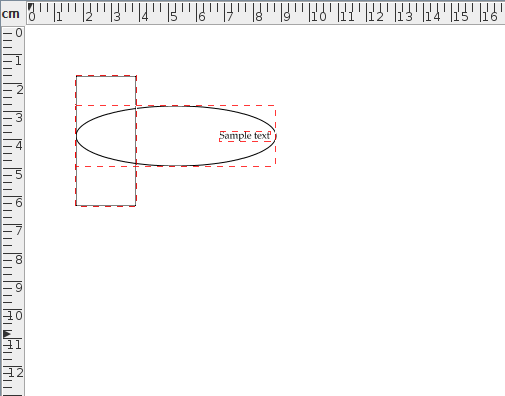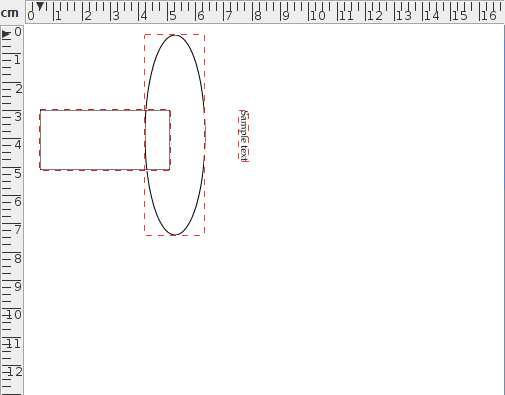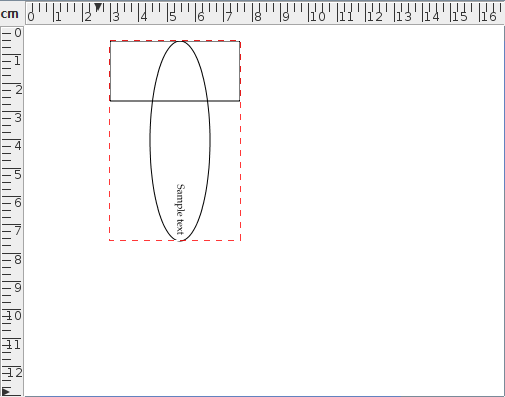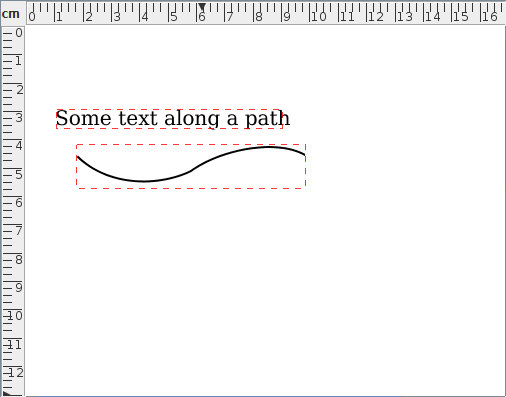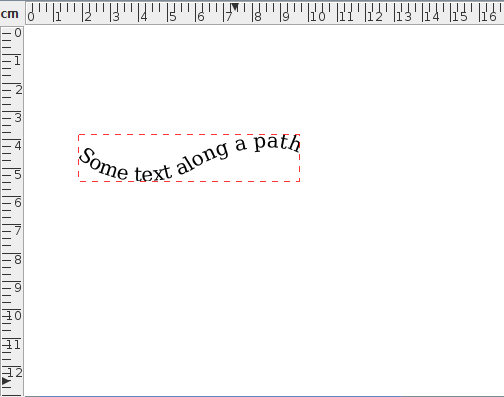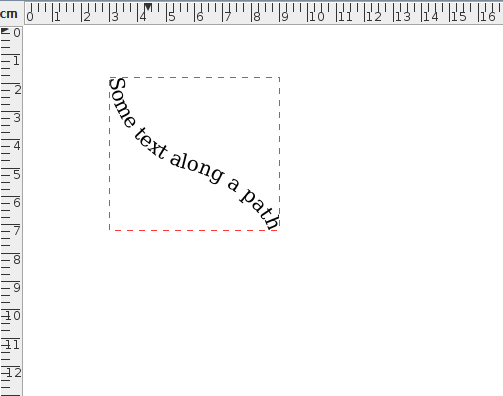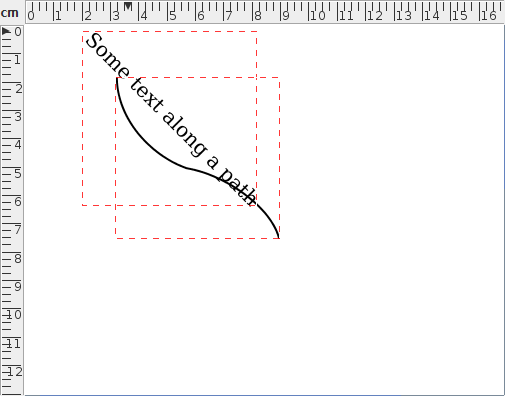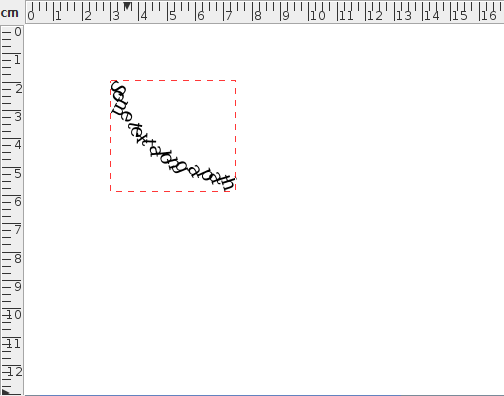Rotating Objects
![]() Selected objects can be rotated
either by clicking on the rotate button or by selecting
Transform->Rotate (Ctrl-W). This will display a
dialog box in which you can specify the angle of rotation.
Selected objects can be rotated
either by clicking on the rotate button or by selecting
Transform->Rotate (Ctrl-W). This will display a
dialog box in which you can specify the angle of rotation.
Notes:
- Individual objects will be rotated relative to the centre of the object.
- Objects within a
group will be rotated relative to the centre of the
group.
- Rotating a text-path will rotate the path and the text
will adjust to follow the transformed path.
- Rotating a text area and path and then combining
them to form a text-path is not the same as first combining
and then rotating.
To illustrate this, in Figure 8.17(a) there are three objects selected. The selection is then rotated 90°. The result is shown in Figure 8.17(b).
In Figure 8.18, the three objects in Figure 8.17 were first grouped (Figure 8.18(a)) and then rotated 90° (Figure 8.18(b)).
In Figure 8.19, the path and text area in Figure 8.19(a) are combined into a text-path, shown in Figure 8.19(b). This text-path is then rotated by 90° resulting in Figure 8.19(c). Note that this is different from first rotating the original path and text area, shown in Figure 8.19(d), and then combining them to form a text-path, shown in Figure 8.19(e).
|
|
If you prefer to rotate an object using the mouse, you first need to enable the hotspots. Then drag the bottom left hotspot to rotate. Note that even if you have more than one object selected, only the object whose hotspot you are dragging will be transformed.
See also:
- Grouping and Ungrouping Objects
- Scaling Objects
- Shearing Objects
- Hotspots
- Combining a Text Area and Path to Form a Text-Path

